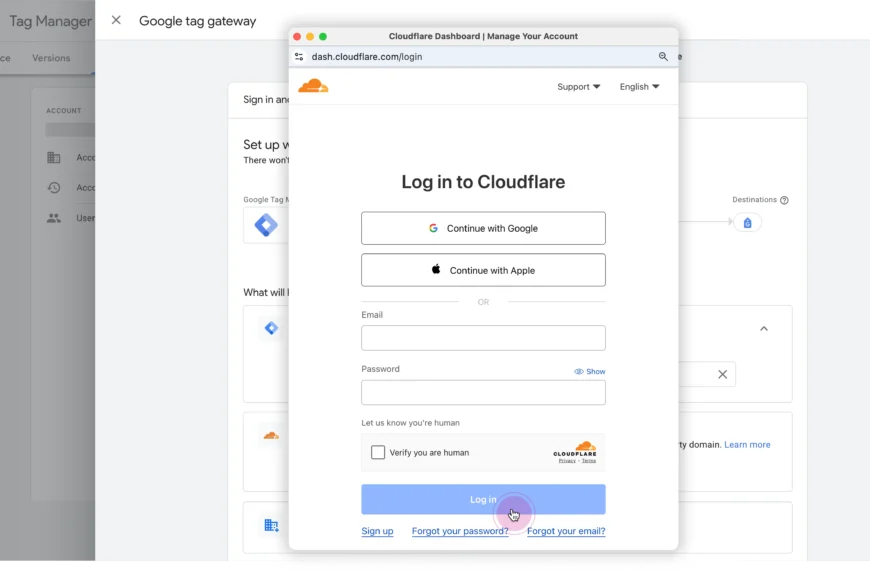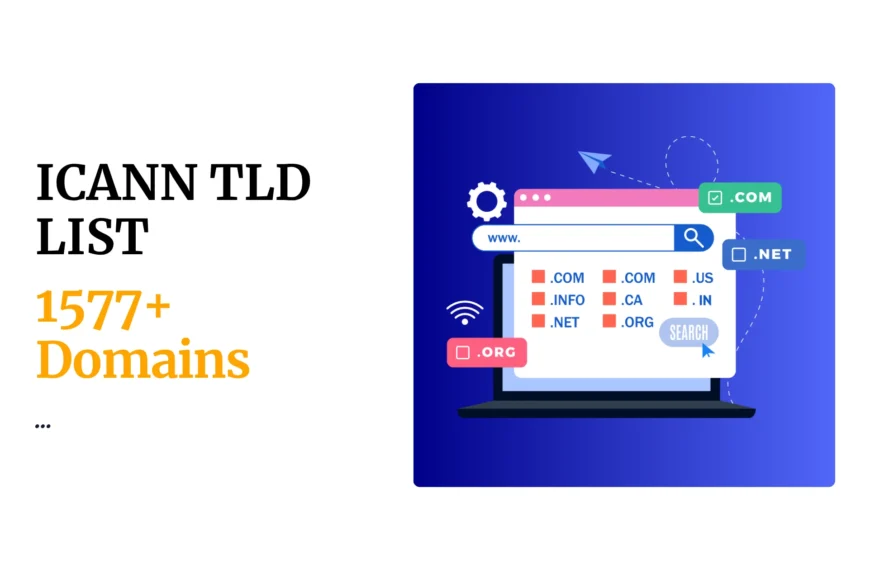In Kenya’s digital landscape, having a strong online presence is crucial for businesses to succeed and thrive. With more people turning to the internet to search for products and services, online marketing has become a powerful tool for reaching potential customers.
To navigate the world of online marketing in Kenya, businesses need to understand the step-by-step approach to effective promotion. This involves using various digital channels and strategies to connect with their target audience and drive engagement.
From creating compelling content to leveraging social media platforms, businesses can establish a solid online marketing strategy that resonates with Kenyan consumers. By understanding the unique preferences and behaviors of the local market, businesses can tailor their approach to maximize effectiveness.
In this article, we’ll explore the step-by-step approach to effective online marketing. So let’s dive straight in.
Step 1: Build an Attractive Brand
To start, focus on creating a brand that catches people’s attention. Think about who you are as a business and what you stand for.
Defining your brand identity and values
Decide what your business represents. Are you all about quality, affordability, or something else? Knowing your values helps customers connect with your brand.
Developing a consistent brand image and messaging
Make sure your brand looks and sounds the same everywhere. Whether it’s on your website, social media, or product packaging, keep things consistent. This builds trust with your customers.
Creating a memorable and recognizable brand for your target audience
Think about what will stick in people’s minds. Your logo, colors, and tagline should be something your target audience easily remembers. This way, when they see it, they’ll think of your business.
Step 2: Invest in a Website that is Customer-friendly & Secure
Having a website that’s easy for your customers to use and keeps their information safe is super important for online marketing in Kenya.
A well-designed website plays a big role in how people see your business online. It’s like your digital storefront where customers come to learn about your products or services.
Here are some things you should consider when setting up your website:
a). User-Friendly Design: Make sure your website is easy to navigate. People should be able to find what they’re looking for without getting lost. Use clear menus and buttons to guide them around.
b). Fast Loading Times: Nobody likes waiting for a website to load. Keep your page loading times short by optimizing images and videos, and choosing a reliable hosting service.
c). Secure Payment Options: If you’re selling products or services online, your customers need to trust that their payment information is safe. Invest in secure payment gateways and SSL certificates to protect their data.
d). Mobile Responsiveness: Many people in Kenya access the internet using their smartphones. Make sure your website looks good and works well on mobile devices. This means having text and images that resize correctly, and buttons that are easy to tap.
e). Search Engine Optimization (SEO): To make sure your website gets found by potential customers, you need to optimize it for search engines like Google. This involves using relevant keywords, creating quality content, and earning backlinks from other reputable sites.
Step 3: Sign up with Google My Business
Google My Business can make a big difference in how people find and notice your business online.
Understanding the Benefits of Google My Business
Google My Business is like a virtual sign for your business on the internet. It helps you show up on Google when people search for products or services you offer. This means more people can discover your business easily.
Claiming and Optimizing Your Business Listing
First things first, claim your business on Google My Business. It’s like saying, “Hey, this is my shop!” Once claimed, you can update and improve the information about your business. Add your business hours, contact details, and even some pictures to make it more inviting.
Optimizing means making your business page the best it can be. Use clear and simple language to describe what you do. Think about what customers would want to know, like what makes your business special.
Leveraging Google My Business for Local SEO and Online Visibility
Google My Business isn’t just for show; it helps your business get noticed locally. When people search for something related to your business in your area, having a Google My Business listing can boost your chances of showing up.
Imagine someone in Nairobi is looking for a product or service you offer. If your business is optimized on Google My Business, it’s more likely to pop up in their search results. That’s the power of local SEO (Search Engine Optimization) – making sure your business stands out to people nearby.
Step 4: Start a Blog for your Business
Now that you’ve got your online presence established, it’s time to consider starting a blog for your business. A blog can be a powerful tool for reaching your audience, boosting your online visibility, and driving traffic to your website.
The Power of Blogging for Content Marketing and SEO
Blogging allows you to regularly create and share valuable content with your audience. It’s a way to showcase your expertise, provide helpful tips, and engage with potential customers. Plus, search engines love fresh content, so having a blog can improve your website’s search engine optimization (SEO) and help you rank higher in search results.
Developing a Content Strategy and Editorial Calendar
Before you start blogging, it’s important to have a plan in place. Think about your target audience and what type of content would be most valuable to them. Consider the topics and themes that relate to your business and align with your brand.
Create an editorial calendar to keep track of your blog posts and ensure consistency. Decide how often you want to publish new content and set realistic goals for yourself. This will help you stay organized and maintain a steady flow of blog posts over time.
Tips for Creating Engaging and Valuable Blog Content
1. Know your audience: Understand who your target audience is and what they’re interested in. Tailor your content to address their needs, challenges, and interests.
2. Use visuals: Incorporate images, videos, and other visual elements to make your blog posts more engaging and appealing.
3. Keep it concise: Write clear and concise blog posts that get straight to the point. Break up your content into short paragraphs and use bullet points or numbered lists to make it easier to read.
4. Be authentic: Share your unique perspective and voice in your blog posts. Be genuine and authentic, and don’t be afraid to show some personality.
5. Encourage interaction: Encourage readers to leave comments, ask questions, and share their thoughts on your blog posts. Engage with your audience and respond to their comments to foster a sense of community.
Step 5: Try other Forms of Content Marketing
After you’ve mastered the basics of online marketing, it’s time to explore other ways to reach your audience and grow your business.
One way to do this is by trying different forms of content marketing. Content marketing involves creating and sharing valuable content with your audience to attract and engage them.
Here are some ideas to get you started:
1. Exploring Different Content Formats: Instead of just sticking to written blog posts, consider creating videos, infographics, or podcasts. These formats can help you connect with different types of audiences and make your content more engaging.
2. Repurposing and Distributing Content: Don’t let your content go to waste after you’ve created it. Repurpose your blog posts, videos, or podcasts into different formats and share them across various channels. For example, you can turn a blog post into a video or create an infographic based on your podcast episodes. This helps you reach a wider audience and get more mileage out of your content.
3. Leveraging Content Marketing for Brand Awareness and Lead Generation: Content marketing is not just about creating content for the sake of it. It’s about using content to build your brand and attract potential customers. Use your content to showcase your expertise, educate your audience, and solve their problems. This can help you establish trust and credibility with your audience, which can ultimately lead to more leads and sales.
Step 6: SEO Your Business Website
Now, let’s talk about an important step in making your business stand out online – SEO, which stands for Search Engine Optimization. It helps your website show up when people search for things on the internet.
Understanding SEO Basics
SEO is like making your business more noticeable in a big online crowd. There are two main types: on-page and off-page SEO. On-page is about improving things on your website, like using the right words and having a clear structure. Off-page is about making your website more popular on the internet by having other websites link to it.
Improving Your Website
When you do on-page SEO, you think about what words your customers might use to find your business. These are called keywords. You put these keywords in the right places on your website, like in the title and the content. This makes it easier for search engines to understand what your website is about.
Getting Popular Online
Now, let’s talk about off-page SEO. It’s like making friends online. The more websites talk about your business and link to your site, the better. It tells search engines that your business is important and trustworthy.
Local and Voice Search Optimization
For local search, think about adding your location to your keywords. If someone in Kenya is looking for what you offer, they’ll find you faster. Voice search is like talking to a computer or phone to find things. Make sure your website can understand these spoken searches too.
Read also: How To Market a Bakery Business in Nairobi: 5 Proven Ideas
Step 7: Post Regularly on Social Media
Social media can be a powerful tool for marketing your business in Kenya. Here’s how you can make the most of it:
1. Identify the Right Social Media Platforms
Not all social media platforms are created equal. Depending on your business and target audience, some platforms may be more effective than others. Platforms like Facebook, Twitter, Instagram, and LinkedIn are popular in Kenya. Take the time to research where your potential customers spend their time online.
2. Create a Social Media Content Calendar
Planning ahead is key to maintaining a consistent presence on social media. Develop a content calendar outlining what you’ll post and when. This helps you stay organized and ensures that you’re sharing a variety of content that resonates with your audience. Include a mix of promotional posts, informative content, and engaging visuals to keep your followers interested.
3. Establish a Posting Schedule
Consistency is key when it comes to social media marketing. Determine how often you’ll post on each platform and stick to your schedule. Whether it’s once a day or a few times a week, find a posting frequency that works for your business and helps you stay top-of-mind with your audience.
4. Engage with Your Audience
Social media is not just about broadcasting your message; it’s also about building relationships with your followers. Take the time to respond to comments, messages, and mentions. Ask questions, run polls, and encourage user-generated content to foster engagement and create a sense of community around your brand.
5. Build a Community
Beyond just posting content, focus on creating a community around your brand. Encourage your followers to share their thoughts, experiences, and feedback. Create exclusive groups or communities where customers can connect with each other and with your brand. By fostering a sense of belonging, you can turn casual followers into loyal advocates for your business.
Read also: #7 Proven Ways To Market A Clothing Store In Nairobi
Step 8: Collect Emails & Send Newsletters
This step is crucial for connecting with your audience and keeping them engaged.
1. Building an Email List and Segmenting Your Audience
Start by collecting emails from people who visit your website. You can do this by offering something valuable in exchange, like a discount or exclusive content. Once you have their emails, organize your subscribers into different groups based on their interests or preferences. This is called segmentation, and it helps you send more targeted and relevant messages.
2. Crafting Effective Email Newsletters and Campaigns
When creating newsletters, keep it simple and friendly. Use clear language, and don’t overload your emails with too much information. Share useful content, promotions, or updates about your business. Make your newsletters visually appealing with images and easy-to-read fonts. For campaigns, plan ahead and have a clear goal – whether it’s promoting a new product or driving traffic to your website.
3. Measuring and Optimizing Email Marketing Performance
After sending out newsletters, it’s essential to track how well they’re doing. Look at metrics like open rates (how many people open your emails) and click-through rates (how many people click on links in your emails). Use this data to understand what works and what doesn’t. If a certain type of content gets more clicks, consider doing more of that. Regularly optimize your approach based on the insights you gather.
Step 9: Spend some Money on Paid Advertising
When you pay for advertising, your business gets promoted in different places online. You might see ads on Google when you search for something, or on social media like Facebook and Instagram.
Here’s how paid advertising can help your business:
1. Getting Seen: Paid advertising puts your business in front of more people who are interested in what you offer.
2. Choosing the Right Platforms: You can use different types of paid advertising, like Pay-Per-Click (PPC) or social media ads. Each platform has its advantages, so you need to choose wisely.
3. Setting up Campaigns: You’ll need to create ads that catch people’s attention and make them want to learn more about your business.
4. Optimizing Your Ads: It’s important to keep an eye on how your ads are performing. If they’re not getting enough clicks or bringing in customers, you might need to change them.
5. Calculating ROI: Return on Investment (ROI) helps you understand if your paid advertising is worth the money you’re spending. If you’re making more money from your ads than you’re spending on them, that’s a good sign!
6. Adjusting Your Strategy: Based on your ROI, you may need to adjust your advertising strategy. This could mean trying different types of ads, targeting different audiences, or changing your budget.
Step 10: Start a Referral Program
This is a powerful strategy that harnesses the strength of word-of-mouth marketing and can greatly benefit your business in Kenya.
1. Understanding Word-of-Mouth Marketing
Word-of-mouth marketing is like when people tell their friends or family about something good they’ve experienced. In business, this means happy customers talking positively about your products or services. It’s a strong way to build trust and attract new customers.
2. Designing an Effective Referral Program
To start, think about how you can make your customers excited to tell others about your business. Create a simple and clear referral program that encourages them to spread the word. This could be by offering discounts, freebies, or other rewards for successful referrals.
Make sure your referral program is easy to understand. Explain the steps clearly so that customers know what to do and how they can benefit. You can use your website or social media to share information about the program.
3. Incentivizing and Rewarding Customer Referrals
Consider what rewards you can give to customers who refer others to your business. It could be a discount on their next purchase or a free product. The key is to make the reward valuable enough to motivate them to share but also manageable for your business.
Step 11: Monitor Your Online Marketing Progress
Here are some steps to guide you in monitoring your online marketing efforts:
1. Establish a Comprehensive Analytics and Reporting Framework
Create a system to collect and organize data about your online marketing activities. This system is like a tool that helps you see the bigger picture. It gathers information about how many people visit your website, which ads they click on, and other important details.
2. Track and Measure Key Metrics for Each Online Marketing Channel
Different online marketing channels, like social media or email, have their own set of important numbers to watch. Track things like the number of people who see your posts, how many click on your ads, and if they end up buying something. These metrics give you clues about what’s effective and what needs improvement.
3. Continuously Optimize and Refine Your Strategies Based on Data
Look at the data you’ve collected regularly. If you notice something isn’t working well, don’t be afraid to make changes. Maybe you can tweak your ads or try a different approach on social media. Use the information you gather to fine-tune your strategies and make them better over time.
Read also: No. 1 Guide To WordPress Website Developers in Kenya
Conclusion
Success in online marketing doesn’t happen overnight. It requires dedication and perseverance. By staying consistent with your efforts and being patient with the process, you’re more likely to see positive outcomes in the long run. Moreover, continuous improvement is key to staying relevant in the ever-evolving online landscape. Keep learning about new trends, tools, and techniques in online marketing. Adapt your strategies accordingly to stay ahead of the competition.
 Domain SearchInstantly check and register your preferred domain name
Domain SearchInstantly check and register your preferred domain name Web Hosting
Web Hosting cPanel HostingHosting powered by cPanel (Most user friendly)
cPanel HostingHosting powered by cPanel (Most user friendly) KE Domains
KE Domains Reseller HostingStart your own hosting business without tech hustles
Reseller HostingStart your own hosting business without tech hustles Windows HostingOptimized for Windows-based applications and sites.
Windows HostingOptimized for Windows-based applications and sites. Free Domain
Free Domain Affiliate ProgramEarn commissions by referring customers to our platforms
Affiliate ProgramEarn commissions by referring customers to our platforms Free HostingTest our SSD Hosting for free, for life (1GB storage)
Free HostingTest our SSD Hosting for free, for life (1GB storage) Domain TransferMove your domain to us with zero downtime and full control
Domain TransferMove your domain to us with zero downtime and full control All DomainsBrowse and register domain extensions from around the world
All DomainsBrowse and register domain extensions from around the world .Com Domain
.Com Domain WhoisLook up domain ownership, expiry dates, and registrar information
WhoisLook up domain ownership, expiry dates, and registrar information VPS Hosting
VPS Hosting Managed VPSNon techy? Opt for fully managed VPS server
Managed VPSNon techy? Opt for fully managed VPS server Dedicated ServersEnjoy unmatched power and control with your own physical server.
Dedicated ServersEnjoy unmatched power and control with your own physical server. SupportOur support guides cover everything you need to know about our services
SupportOur support guides cover everything you need to know about our services








